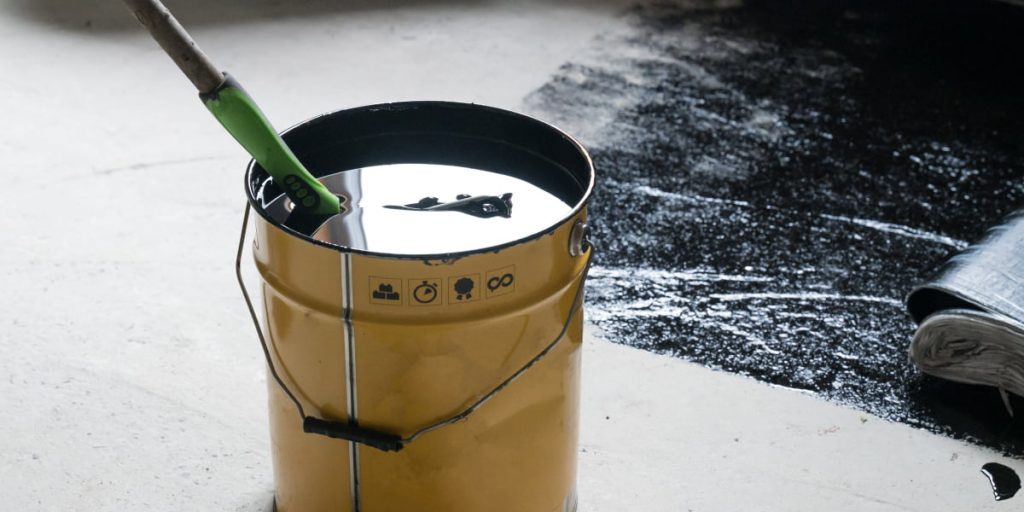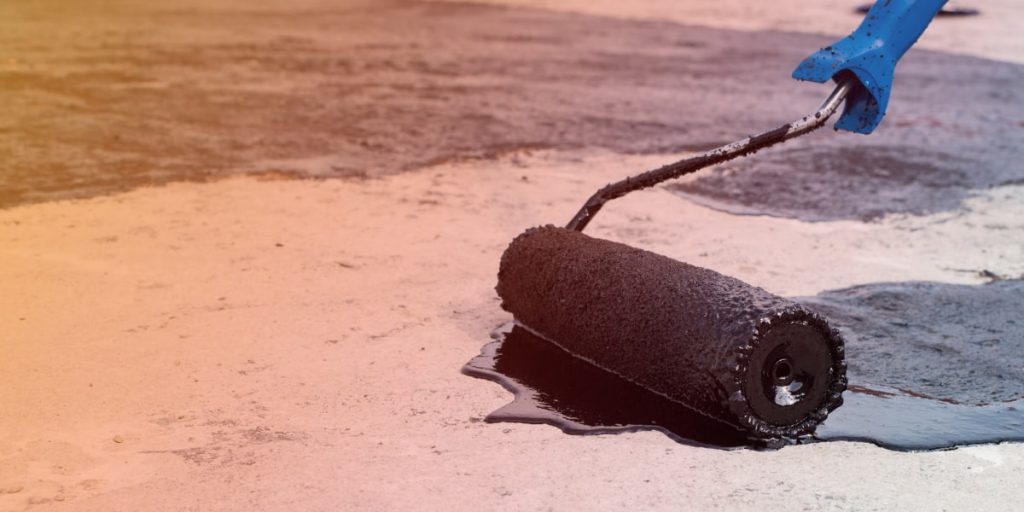Published on November 29th, 2022
Last updated on February 3rd, 2023
Applying Garage Floor Epoxy: Detailed DIY Guide

Regardless of whether the garage is a part of the house or is a separate structure. You should not neglect it. It is worth taking care of the appropriate quality of materials and design. An important element here is the floor, which must be durable and resistant to mechanical damage. Many people do not even think about the optimal coating for the garage. They buy the cheapest ceramic tiles, believing they will do just fine for the garage, and they do not think about whether the tiles can withstand the car’s weight. And how long do you expect them to work in these conditions? Is applying an epoxy garage floor suitable for the garage? And how to apply garage floor epoxy?
Undoubtedly, unique plastic material creates a durable coating with a beautiful gloss. You transform the room. There is a stylish gloss, and the poured floor is easy to walk on and does not wear out for a long time.
What Are the Types of Epoxy Garage Floor Installation?

We divide epoxy floors into three basic types: thick-film, industrial, and quartz. Although, there one more type exists. Its name is thin-film epoxy flooring. This type is the least durable and least resistant to damage and abrasion in comparison to others. So let’s pay more attention to options that are suitable for garages.
| Thick-ply epoxy flooring | It creates a floor at least 2 mm thick (sometimes even up to 5 mm thick). Like thin-layer flooring, it can be colorless or enriched with dyes. It requires more advanced skills and equipment – applying resin to the substrate with a roller is impossible here, so you need a professional spreader for resins and screeds. In addition, the resin must be well mixed, observing the proportions, to achieve the desired effect after pouring. So, you need the help of professionals, and do not try to pour self-leveling resin for thick screeds yourself. Thick-layer epoxy floors can be successfully used for applying garage floors. They are much more resistant to all kinds of scratches, loads, damage, and to significant temperature differences. |
| The floor, with the addition of quartz | It has enhanced durability and is suitable for areas of very high abrasion – train stations, airports, and other public buildings where people are constantly walking in outdoor shoes. |
| Industrial | You can use it in industrial buildings, warehouses, garages, and parking lots. Application areas are pharmaceuticals, the food industry, electronics manufacturing, engineering, car centers, and workshops. |
How to Apply Garage Floor Epoxy: DIY?
The market for innovative building goods offers a special garage coating based on epoxy resin. The advantage of this material is its relative cheapness, durability, high wear and impact resistance, and the ability to do all the work yourself. How to do the pouring yourself? It is easy if you follow the instructions.
Tools and materials
The first step is the purchase and preparation of tools and materials:
- two-component epoxy of a suitable brand;
- rollers on long rods and longhairs;
- needle rollers;
- paint shoes and a respirator;
- plastic mixing container with no corners;
- wide trowels and narrow brushes;
- construction mixer (drill with a special attachment);
- primer of deep penetration;
- construction vacuum cleaner or broom.
If the concrete base is old, with many defects, its restoration will require:
- putty;
- grinder.
Applying an epoxy coating for the garage is worth following the following sequence.
Step 1: Preparation
Preparing the garage floor for epoxy is really essential. It must be dry, dust-free, and relatively even and smooth. If the concrete slab is new, you only have to clean it and cover it with two coats of primer. You need to perform the restoration if there is damage. You may seal the holes with putty. It will eventually reduce the consumption of the base material. The better the quality of the screed, the more aesthetic appearance of the finished surface.
Step 2: Deep cleaning
If oil stains appear on the screed, you should treat them with the powder supplied. Experienced builders advise prime well with a deep penetration primer for porous surfaces for interior work.
Step 3: Preparing the tools
You need to prepare the working tool (epoxy, container, trowels, and brushes).
Step 4: Mixing the casting material
Since epoxy is a two-component material, the liquid base consists of a hardener. You should actively mix it for 5-7 minutes with a spatula or trowel. Then you can start applying epoxy garage floor.
Step 5: Application the casting material
Use a narrow brush to make a trench around the garage’s perimeter. You have to use the rest of the material with a roller.
Step 6: Surface improvement
It is worth a dense distribution of quartz sand after coating 1-2 meters. If the surface is smooth, it is enough to apply one coat. If you use the material in car services or car washes with high “passability” of cars, we recommend applying at least two coats.
Step 7: let the material dry
It is necessary to let the material dry now. As a rule, the product’s complete drying takes 1 to 3 days. But it depends on the ambient air temperature and humidity. You can perform the work at a temperature of +10 to +25 degrees and no more than 60% humidity.
Since this epoxy garage floor installation consists of epoxy resin, you can use it for underfloor heating. The main thing is to pour a reinforced screed of a certain height that will withstand the weight of the car. You can do it with a heating cable, such as using electric floors or metal-plastic pipes for water floors.
What Are the Benefits of Applying Epoxy Garage Floor?

Properly selected and made epoxy floor in the garage is a solution that brings many benefits. Among its main advantages are the following:
| Resistance to moisture | Polymer flooring is completely waterproof and does not absorb moisture. So even in an unheated room such as a garage, you avoid the risk of bacteria and fungus |
| High durability | Properly made epoxy floor is solid and resistant to mechanical damage, impact and stress, so that it will last for many years |
| Resistance to abrasion | This feature, which is mainly characteristic of coarse-grained and quartz floors, is especially important in the case of the garage where the surface is particularly exposed to abrasion |
| Resistance to chemicals | Epoxy garage floor installation does not get damaged by grease or engine oil. It is a solid floor, so it is easy to clean |
| Simplicity to install | You can install this type of floor very quickly, so you do not have to do cumbersome and time-consuming work that would prevent you from using the garage or other rooms |
| Non-slip | You can move safely and comfortably on the surface with epoxy flooring thanks to this |
Due to the above properties, the epoxy garage floor is worth applying not only in the garage but also in places such as the boiler room, basement, or vestibule.
Bottom Line
The finished garage floor epoxy with this DIY looks attractive and original because it has no seams, as on linoleum. As you can see, it is not at all difficult to make almost perfect flooring for the garage with your hands. In this case, there is no requirement to have special construction skills or the presence of specific tools at all.
FAQ
Can an epoxy garage floor installation be exposed to ultraviolet?
No, this type of flooring is not exposed to direct and prolonged exposure to ultraviolet rays. But some of its features may weaken, and the color will fade and lose its aesthetic appearance. Polyurethane resin floors are better suited for surfaces in sunny places.
What is quartz sand applied for?
Quartz sand is applied to the wet substrate immediately after it is poured to eliminate sliding. The excess is removed after six to eight hours when the central mass of quartz has adhered to the polymer. The placer can have both natural colors and be colored in any shade.
Can I coat a wood floor with epoxy?
Yes, epoxy is the best option for this. However, it is recommended to start such work only if the primary condition – the floor in use, is dry.
When to apply a second coat of epoxy?
If the epoxy is solvent-free, the second coat can be applied while the first coat is still tacky. If more than 30 hours have elapsed since the first coating, it is recommended to sand the surface lightly.


